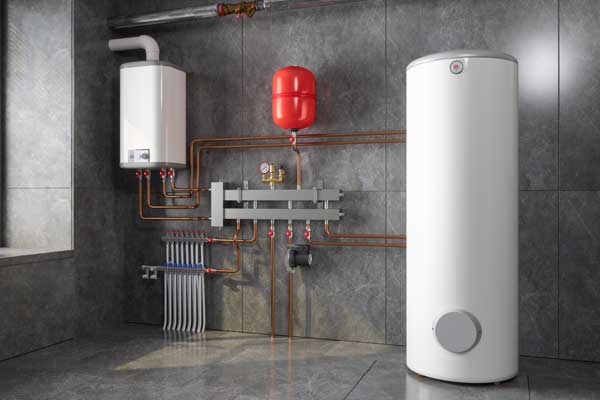Making Sure Durability of Your Home's Hot Water System: Care AdviceTips on How to Keep Your Home's Hot Water System in Good Condition
Making Sure Durability of Your Home's Hot Water System: Care AdviceTips on How to Keep Your Home's Hot Water System in Good Condition
Blog Article
We've noticed the article relating to How to Maintain Your Water Heater & Prolong its Life down the page on the web and reckoned it made sense to quickly share it with you over here.

Hot water is vital for everyday comfort, whether it's for a revitalizing shower or washing recipes. To ensure your warm water system runs efficiently and lasts longer, routine upkeep is essential. This write-up offers functional tips and understandings on just how to preserve your home's warm water system to avoid interruptions and pricey repairs.
Introduction
Maintaining your home's hot water system may appear overwhelming, yet with a few easy actions, you can ensure it operates efficiently for years to find. This overview covers everything from recognizing your warm water system to do it yourself upkeep suggestions and recognizing when to call specialist help.
Value of Maintaining Your Warm Water System
Regular maintenance not only expands the life-span of your warm water system but likewise guarantees it runs efficiently. Ignoring maintenance can cause lowered efficiency, higher power costs, and also premature failing of the system.
Signs Your Hot Water System Requirements Upkeep
Recognizing when your hot water system needs focus can prevent major problems. Keep an eye out for indicators such as inconsistent water temperature, strange noises from the heating unit, or rustic water.
Purging the Hot Water Heater
Purging your hot water heater gets rid of debris buildup, improving efficiency and prolonging its life.
Checking and Replacing Anode Rods
Anode rods avoid corrosion inside the tank. Evaluating and changing them when worn is important.
Complicated Issues Calling For Expert Help
Examples include major leaks, electrical troubles, or if your hot water heater is continually underperforming.
Routine Expert Upkeep Perks
Professional upkeep can include detailed assessments, tune-ups, and ensuring conformity with safety and security criteria.
Checking and Adjusting Temperature Level Settings
Changing the temperature setups ensures optimal efficiency and safety and security.
Do It Yourself Tips for Maintenance
You can execute a number of maintenance jobs yourself to maintain your warm water system in leading condition.
Checking for Leakages
Consistently check pipes and connections for leakages, as these can bring about water damages and greater costs.
Comprehending Your Hot Water System
Before diving into upkeep jobs, it's handy to comprehend the fundamental elements of your hot water system. Generally, this includes the water heater itself, pipelines, anode poles, and temperature level controls.
Regular Monthly Maintenance Tasks
Regular monthly checks can aid capture small problems before they escalate.
Testing Stress Alleviation Valves
Testing the stress safety valve guarantees it operates appropriately and protects against too much stress build-up.
Protecting Pipelines
Shielding warm water pipelines lowers warmth loss and can conserve power.
When to Call an Expert
While DIY maintenance is advantageous, some issues require professional proficiency.
Conclusion
Normal upkeep of your home's warm water system is vital for performance, long life, and price savings. By following these ideas and understanding when to seek expert aid, you can ensure a trustworthy supply of hot water without unanticipated interruptions.
How to Maintain an Instant Hot Water Heater
Before tinkering with your hot water heater, make sure that it’s not powered on. You also have to turn off the main circuit breaker and shut off the main gas line to prevent accidents. Also turn off the water valves connected to your unit to prevent water from flowing into and out of the appliance. 2. When you’re done, you have to detach the purge valves’ caps. These look like the letter “T” and are situated on either side of the water valves. Doing so will release any pressure that has accumulated inside the valves while at the same time avoid hot water from shooting out and burning your skin. 3. When the purge valves’ caps are removed, you have to connect your hosing lines to the valves. Your unit should have come with three hoses but if it didn’t, you can purchase these things from any hardware or home repair shops. You can also get them from retail stores that sell water heating systems. Read the user’s manual and follow it to complete this task properly. When the hosing lines are connected, open the purge port’s valves. 4. You should never use harsh chemical cleaners or solutions when cleaning your unit. Make use of white vinegar instead. It should be undiluted and you’ll probably use about 2 gallons. 5. Now flush your water heater. This task should probably take about 40 minutes. We can’t give you specific directions for this because the procedure is carried out depending on the type, model and brand of your heater. With that being said, refer to the user’s manual. 6. When you’re done draining the unit, you have to turn off the purge port valves again. Remove the hosing lines that you earlier installed on each of the water valves. Put the valve caps (purge port) back in their respective places and be very careful so as not to damage the rubber discs that are found inside these caps. 7. Now that everything’s back in place, check your user’s manual again to find out how to reactivate your water heating system. 8. Once it is working, turn one of your hot water faucets on just to let air pass through the heater’s water supply pipes. Leave the tap on until water flows smoothly out of it. https://www.orrplumbing.com/blog/2014/september/how-to-maintain-an-instant-hot-water-heater/

We were made aware of that write-up about How to Maintain Your Water Heater & Prolong its Life from a good friend on our other site. Remember to take a moment to distribute this write-up if you liked it. We take joy in your readership.
Get Quote Report this page